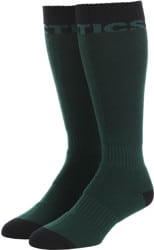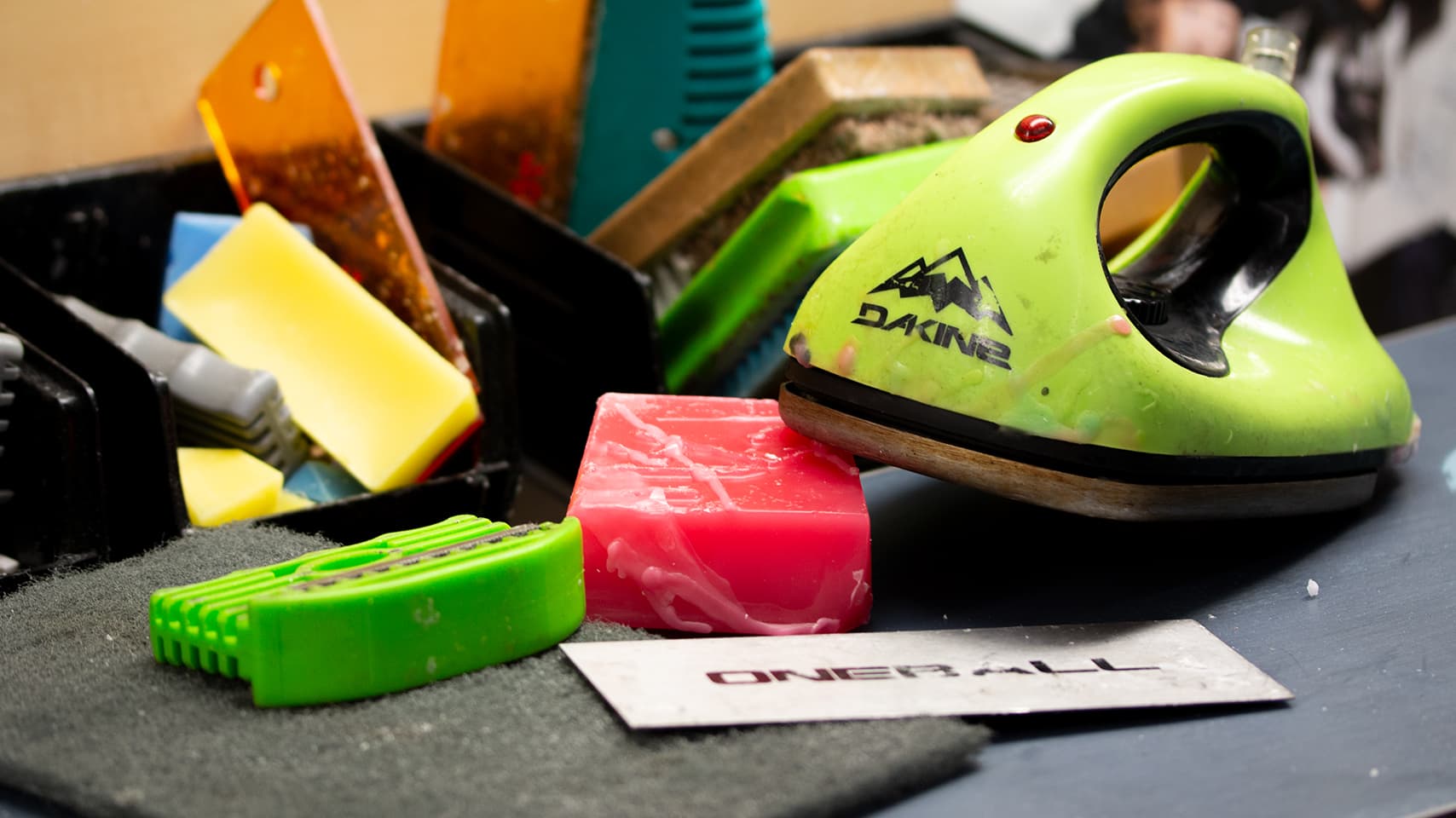Snowboard Boots Buying Guide
A comfortable and correct fitting pair of snowboard boots can be the deciding factor between an amazing day on the mountain or a miserable one. Simply put, understanding how snowboard boots should fit and perform is an essential factor for a proper snowboard set up. This guide will quickly explain everything you need to know about fitting snowboard boots so you will know how to buy the boots that are best for you and your riding style.
Here's what we’ll cover:



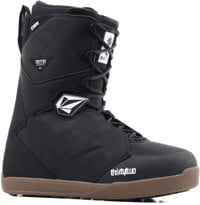
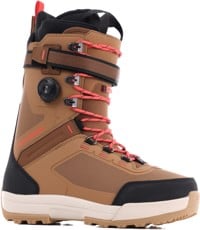






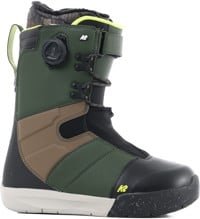

















SNOWBOARD BOOT FIT
A perfect fit for a pair of boots should be a tight, stable fit over the top of your foot and around your upper ankle. They will resist slightly when you lean forward and flex, but still allow for a comfortable range of motion without pressure points. Your toes should barely brush against the toe box and your heel should be firmly held into the heel cup of the boot.
When choosing a pair of proper fitting snowboard boots, your toes will barely brush up against the end of the boot liner while standing in place with the boot fully laced up. Your toes should not curl or feel any pressure on the tips of your toes, but rather just graze or be as close as possible to the end of the boot liner. As you bend your legs and crouch down into a snowboard-ready stance, you should feel your toes pull back ever so slightly resulting in a proper fit. It is important to note that you should always wear a proper pair of snowboarding socks when trying on boots and while riding.
Your snowboard boots will be the tightest they will ever be the first time you try them on. Over time, the padding inside your boot will “pack out” some (up to a half size), creating more space and a less “snug” fit. Some people make the mistake of buying boots that fit like shoes when they’re new, with extra room in the toes. This feels great when you’re initially standing or walking around, but will lead to heel lift and foot cramps when you’re actually riding due to your feet and lower legs working excessively hard as they try to compensate for the “slop” of loose boots.
SNOWBOARD SOCKS

There is a reason that snowboard specific socks were created. Wearing your everyday cotton socks on the mountain can lead to improper boot fit, frozen feet, increased fatigue and general discomfort. Snowboard socks are designed specifically to work with your foot and ankles' natural articulation. This leads to less bunching of the sock in your boots and a reduced risk of discomfort from long days of riding. These specially designed socks also offer added warmth, moisture wicking properties, and increased comfort.

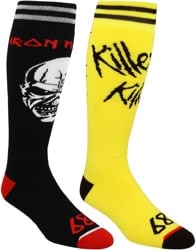


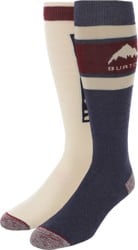
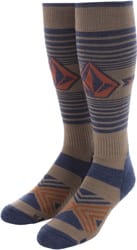



BOOT TO BOARD SIZE COMPATIBILITY
Reference the chart below to make sure your boards' width and boot size complement each other. Having a board that fits your boot size is key for functionality and board control on the mountain. A board that is properly sized to fit your boot size will allow you to maximize the leverage and control you have over your board when maneuvering edge to edge. A board that is too wide will result in less control, while a board that is too narrow for your boot size will enable heel and toe drag causing a loss of edge control when turning.
| Snowboard Waist width (CM) | 17.9 - 22.1 | 22.2 - 23.1 | 23.2 - 23.9 | 24 - 24.4 | 24.5 - 24.9 | 25 - 25.4 | 25.5 - 25.9 | 26 - 26.9 | 27 - 27.5 + |
| Men's Boot Size (US) | 5.5 & under | 6 - 6.5 | 7 - 7.5 | 8 - 8.5 | 9 - 9.5 | 10 - 11 | 11 - 11.5 | 12 -14 | 15 - 16 |
| Women's boot size (US) | 6.5 & under | 7 - 7.5 | 8 - 8.5 | 9 - 9.5 | 10 - 10.5 | 11+ | 11+ | 11+ | 11+ |
| kids boot size (US) | 5.5 & Under | 6 - 6.5 | 7 - 7.5 | 8 - 8.5 |
TYPES OF SNOWBOARD BOOTS

Knowing the type of rider you are and the kind of terrain you prefer riding in is the first step to finding your ideal pair of boots. Various boots types are designed for riding in specific conditions and are crafted to work with a riders specific skill set on a snowboard. Most beginners are looking to ride the whole mountain and thus need an “All-Mountain” boot that offers a medium level of flex and increased mobility, while advanced more freestyle minded rider will gravitate towards a boot with added mobility and more flex, sacrificing some support.
SNOWBOARD BOOT LACING SYSTEMS

There are three main types of snowboard boot lacing systems; traditional laces, speed laces, and the BOA® lacing system. Each of these systems has its own pros and cons when it comes to overall fit, adjustability, and dependability. Ultimately the choice on what type of lacing system you prefer comes down to personal preference and what you find works best for your ride style and on-mountain needs. Hit the button below to learn more about the pros and cons of each type of snowboard boot lacing system.
COMMON ERRORS WHEN PURCHASING SNOWBOARD BOOTS
- Buying boots that are either too small or too big. Follow our suggestions above or swing into the shop to have our knowledgeable staff guide you through the fit process.
- Buying boots not suited for your style of riding or skill level. See our section on snowboard boot types to decide what boots will best suit your needs.
- Overlooking the fact that boots are the one piece of equipment that you will spend most of your time in. Whether that’s kicking back in the parking lot, lapping the park or hiking a pillow line, you will always be in your boots. Invest wisely, don’t blow all your budget on a board and bindings. Trust us, your feet will thank you.
- Buying boots simply because they look cool. Styles and trends come and go, make sure you are investing your hard-earned cash into something that will be comfortable and compliment your style of riding.
- Taking advice from others without shopping around. Just because your buddy loves a certain brand or model of boots does not mean your feet will. Shop around and make the big decisions yourself.
SNOWBOARD BOOT ANATOMY & TERMINOLOGY
- Shell – the durable and water resistant outer portion of the boot that the liner slides into.
- Toe box – the area of the boot that covers your toes or end of your foot.
- Articulated Cuff – grooves or removed shell materials that allow the upper and lower zones of the boot to flex independently of one another. This reduced shell distortion over time and provides natural flex.
- Rubber/Grip Backstay – a strip of grippy or grooved material on the back of the boot that runs up the ankle to provide extra grip and heel hold with your binding's highback.
- Laceposts – metal post on the upper portion of Traditional Lace boots that unsure lace tightness and fit adjustability.
- Boa Dial - a circular dial that tightens and loosens the Boa cable providing easy fit adjustments and on the fly changes.
- Boa Cable – steel or braided cable that works in conjunction with the BOA Dial to tighten the boots shell, ensuring a secure and proper fit.
- Boot Liner – the removable portion of the boot that is held in place by the shell and inner lace harness. These are often made of EVA foam and can be heat molded.
- Footbed – or the insole of the boot which is found within the liner and can often be removed.
- Inner Lace Harness – a cinch up hardness that is attached to the inner portion of the boots shell which holds the liner and your heel in place.
- Sole – the bottom of the boot which provides grip and durability.
KEEP LEARNING
Still Have Questions?
We’re here to help. You can call, email, chat or IM during business hours seven days a week. Our customer service staff skates…a lot. They know their stuff and are happy to help you with all things skate.

